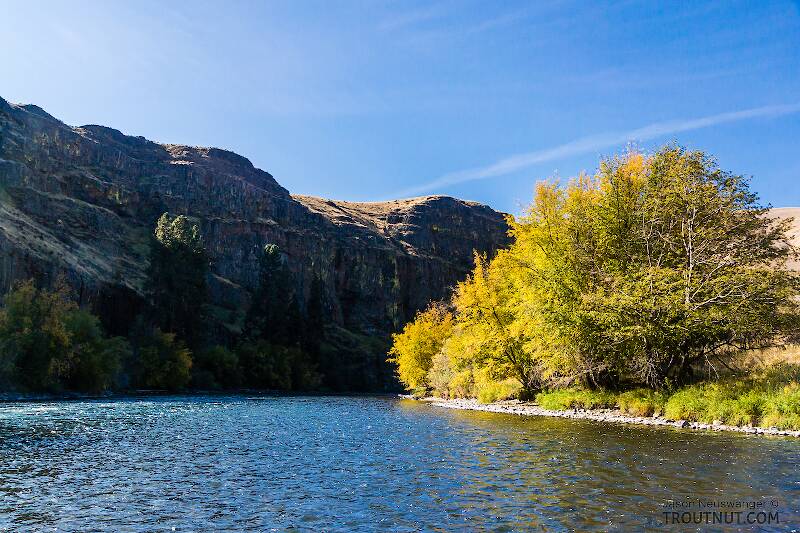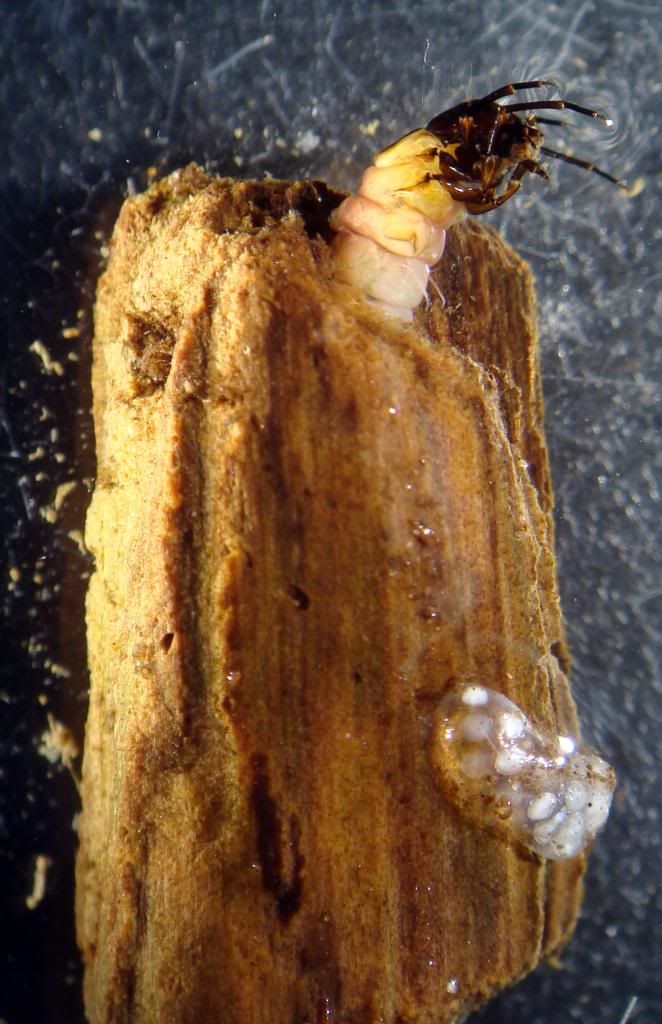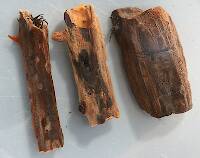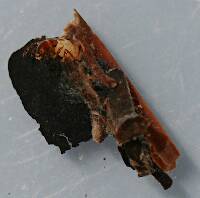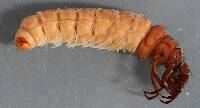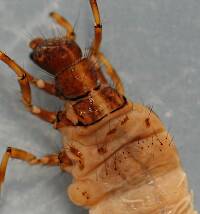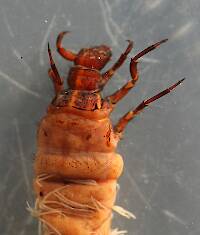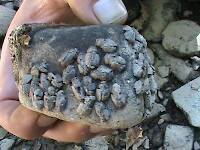
Blue-winged Olives
Baetis
Tiny Baetis mayflies are perhaps the most commonly encountered and imitated by anglers on all American trout streams due to their great abundance, widespread distribution, and trout-friendly emergence habits.
Featured on the forum

This specimen keys pretty easily to Onocosmoecus, and it closely resembles a specimen from Alaska which caddis expert Dave Ruiter recognized as this genus. As with that specimen, the only species in the genus documented in this area is Onocosmoecus unicolor, but Dave suggested for that specimen that there might be multiple not-yet-distinguished species under the unicolor umbrella and it would be best to stick with the genus-level ID. I'm doing the same for this one.

Troutnut is a project started in 2003 by salmonid ecologist Jason "Troutnut" Neuswanger to help anglers and
fly tyers unabashedly embrace the entomological side of the sport. Learn more about Troutnut or
support the project for an enhanced experience here.
Oldredbarn on Feb 6, 2013February 6th, 2013, 11:03 am EST
Really interesting case there!
Spence
Spence
"Even when my best efforts fail it's a satisfying challenge, and that, after all, is the essence of fly fishing." -Chauncy Lively
"Envy not the man who lives beside the river, but the man the river flows through." Joseph T Heywood
"Envy not the man who lives beside the river, but the man the river flows through." Joseph T Heywood
Crepuscular on Feb 6, 2013February 6th, 2013, 11:22 am EST
Hollowed out piece of wood. Pretty neat. I hope Dave will correct me if I'm wrong but I believe this is the only genus to utilize a case like this.
Oldredbarn on Feb 6, 2013February 6th, 2013, 11:31 am EST
I realize that dying is a bad strategy for a species, but you would think that construction and carrying these cases around would deplete energy.
Show these cases to the general public and they wouldn't believe it.
Spence
Show these cases to the general public and they wouldn't believe it.
Spence
"Even when my best efforts fail it's a satisfying challenge, and that, after all, is the essence of fly fishing." -Chauncy Lively
"Envy not the man who lives beside the river, but the man the river flows through." Joseph T Heywood
"Envy not the man who lives beside the river, but the man the river flows through." Joseph T Heywood
Creno on Feb 6, 2013February 6th, 2013, 2:30 pm EST
And someone laid eggs on it too :-) I will wait for photos........
Entoman on Feb 6, 2013February 6th, 2013, 2:47 pm EST
I think you are right, Eric. Cool Bug! The only other species I'm aware of is the one we have out here on the West Coast, H. californicum. Distribution is reported as West of the Cascades, but I have collected them in the panhandle region of Idaho. They like big hunks of bark like this but they will also hollow out twigs that can look at first glance like a more typical cylindrical caddis case. They fooled me into thinking they were a different species for awhile. I think there is another genus in the family that likes hunks of bark too, but I don't think single pieces and they don't have the single gills that show here, either.
You'd think so Spence, but they actually get around pretty good. They are much faster than Dicosmoecus (October Caddis) for example. Their cases are actually very light, approaching neutral density. Sometimes the water movement from your hand trying to grab them too fast will move them away from you like a leaf. This perhaps explains why I've only seen them in the very soft edges. How they survive raging flood water is a mystery to me! I'm not aware of a common name for them and don't believe they are significant to anglers. I've never seen an adult that I'm aware of and have no idea what they would look like. I think they are rare, but Dave can better address that as well.
...but you would think that construction and carrying these cases around would deplete energy.
You'd think so Spence, but they actually get around pretty good. They are much faster than Dicosmoecus (October Caddis) for example. Their cases are actually very light, approaching neutral density. Sometimes the water movement from your hand trying to grab them too fast will move them away from you like a leaf. This perhaps explains why I've only seen them in the very soft edges. How they survive raging flood water is a mystery to me! I'm not aware of a common name for them and don't believe they are significant to anglers. I've never seen an adult that I'm aware of and have no idea what they would look like. I think they are rare, but Dave can better address that as well.
"It's not that I find fishing so important, it's just that I find all other endeavors of Man equally unimportant... And not nearly as much fun!" Robert Traver, Anatomy of a Fisherman
Crepuscular on Feb 6, 2013February 6th, 2013, 3:03 pm EST
Sometimes the water movement from your hand trying to grab them too fast will move them away from you like a leaf.
Yeah actually the only reason I noticed this one today was because there was a random piece of wood stuck to another stick that was waving in the current. I was actually looking for a couple other caddis in the same place when I came across this one.
Can anyone ID the eggs?
Entoman on Feb 6, 2013February 6th, 2013, 3:11 pm EST
Hmmm... I'm not much of an egg man, but they almost look amphibian.
"It's not that I find fishing so important, it's just that I find all other endeavors of Man equally unimportant... And not nearly as much fun!" Robert Traver, Anatomy of a Fisherman
Quick Reply
Related Discussions
Topic
Replies
Last Reply
8
Oct 15, 2014
by Crepuscular
by Crepuscular
2
Feb 15, 2013
by Troutnut
by Troutnut
9
Dec 1, 2014
by Stewart711
by Stewart711
3
Feb 12, 2009
by Creno
by Creno

